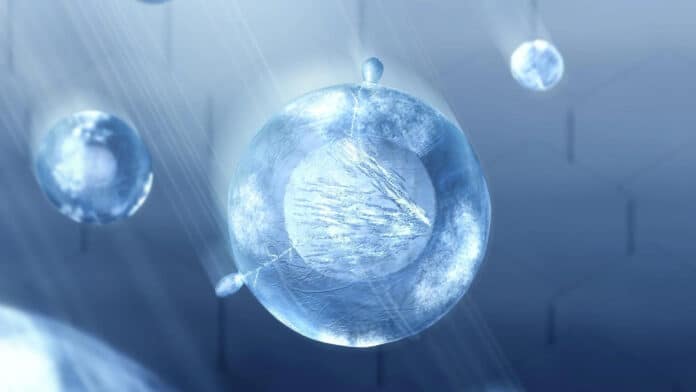The study of supercooled water, ice nucleation, and droplet freezing frequently uses supercooled water droplets. By generating secondary ice, their freezing in the atmosphere influences clouds’ dynamics and climatic feedback and can hasten cloud freezing. Droplet freezing occurs at various lengths and time scales14,18 and is sufficiently stochastic to make it improbable that two frozen drops are identical.
In a new study, scientists used optical microscopy and X-ray laser diffraction to explore the freezing of tens of thousands of water microdrops in a vacuum after homogeneous ice nucleation.
Scientists in atmospheric science are attempting to comprehend what kind of ice forms in clouds and how it is produced so effectively. In comparison to waiting for ice to form in a freezer, water that has been supercooled will freeze far more quickly. The ice you obtain from the freezer differs from what people have previously observed. But until recently, it was quite challenging to see what was going right before freezing.
Scientists in this study used the Linac Coherent Light Source (LCLS) X-ray laser located at the Department of Energy’s SLAC National Accelerator Laboratory. They developed a model that resembles the freezing process in seven different stages. The results surprised them: they discovered an unexpected structure along the way.
Claudiu Stan, a scientist at Rutgers University, said, “The freezing of these tiny droplets is a phenomenon that isn’t fully understood, and it might contain clues that could help us better understand climate change. We discovered that the process is more complicated than one might think.”
As mentioned above, scientists used optical microscopy and X-ray diffraction techniques. They rapidly cooled the drops in a vacuum to help capture the initial freezing stages after realizing they are independent of external conditions. A crystalline arrangement quickly developed after the freezing process began, as seen by diffraction from the produced ice crystals.
Diffraction from the liquid still present between the ice crystals produced patterns resembling those found on the surface of ice, where there is a very thin layer that is neither liquid nor solid. The scientists also discovered that the ice develops a strained, or stressed, hexagonal crystal configuration immediately following freezing. This surprising structure, which had not before been seen, is a transient, unstable state that is probably going to form before ice with other kinds of anomalies in the crystal structure.
This freezing was rapid and happened in very small regions. Here comes the X-ray laser into action that allows scientists to follow these ultrasmall, ultrafast changes and capture snapshots of the molecules in the crystal to observe their behavior throughout the process.
The supercooled drops travel through various stages of freezing. The researchers found seven of these steps in their system and organized them into a prediction model—a little bit of ice first forms in extremely cold water. The droplet then slightly changes shape as ice forms in tree-like patterns, freezing half of the water inside.
Then, a central region with both the liquid and the tree-like ice patterns develops around an outer layer of smooth ice. As the interior liquid is forced out via fissures in the outer ice layer, little, pointy ice structures appear on the droplet’s surface because water expands as it transforms into ice.
The sharp ice structures the droplet makes quickly grow larger and larger. Some drops break apart but only slightly shatter due to the growing ice. The pressure from the expanding ice causes additional droplets to break into pieces.
Stan said, “This a quite complicated process because some of these stages start at variable times and places, so each drop freezes in a slightly different way. At first, we were not sure that it could be modeled with our data, but we made a model with seven freezing stages and predicted slightly different freezing for each drop. Because of our success, we think such freezing models can also be made for cloud droplets.”
The scientists intend to conduct follow-up studies at various points to acquire a complete picture now that they understand what occurs at the start of this freezing process.
The study provides a thorough understanding of the freezing behavior of supercooled water droplets, which may open up new perspectives on atmospheric processes and the larger climate system. Beyond this, the methods employed might aid in improving the understanding of the solidification or freezing processes in other materials or under different meteorological situations.
Journal Reference:
- Kalita, A., Mrozek-McCourt, M., Kaldawi, T.F. et al. Microstructure and crystal order during freezing of supercooled water drops. Nature 620, 557–561 (2023). DOI: 10.1038/s41586-023-06283-2
